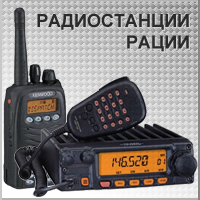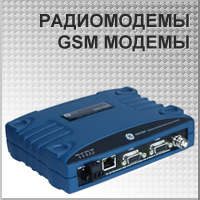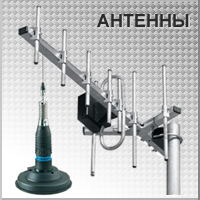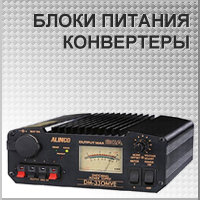Commercial Electric Digital multimeter
|
| Symbol | Definition |
 | Indicates important safety information |
 | Caution, possibility of electric shock. |
 | Alternating current (AC). |
 | Direct current (DC). |
 | The fuse must be replaced with the rating specified in this manual. |
 | Equipment protected throughout by DOUBLE INSULATION or REINFORCED INSULATION. |
 | Conforms to UL STD. 61010-1,61010-2-030 and 61010-031. |
 | |
 | (MEASUREMENT CATEGORY III) is applicable to test and measuring circuits connected to the distribution part of the building’s low-voltage MAINS installation. |
PRECAUTIONS
WARNING: This manual contains Information and warnings necessary for safe operation and maintenance of the meter. It Is recommended that you read and understand this Instruction manual thoroughly prior to using the meter.
Failure to understand these Instructions and to comply with the warnings and Instructions contained herein can result In serious Injury or damage.
WARNING: Full compliance with safety standards can be guaranteed only with test leads supplied.
WARNING: Before taking measurements of voltage with the probe, make sure there is no electronic element connected to the test socket of the transistor.
WARNING: Measure a known voltage wtth the meter to verify that the meter Is working properly. If the meter is working abnormally, stop using immediately. A protective device may be damaged. If there is any doubt, have the meter inspected by a qualified technician.
WARNING: When the meter Is linked to measurement circuits, do not touch unused terminals.
WARNING: When making connections, connect the common test lead before connecting the live test lead. When disconnecting, disconnect the live test lead before disconnecting the common test lead.
WARNING: Disconnect power to the circuits and discharge all high-voltage capacitors before testing resistance, continuity, diodes, or capacitance.
WARNING: Do not measure voltages above 600V in Category III installations.
WARNING: Do not operate the meter with the case (or part of the case) removed.
WARNING: Use caution when working with voltages above 60VDC or 30V AC RMS. Such voltages pose a shock hazard.
WARNING: Never perform resistance or continuity measurements on live circuits.
WARNING: Do not operate the meter around explosive gas, vapor or dust.
CAUTION: When the range of the value to be measured Is unknown, check that the range Initially set on the meter Is the highest possible setting.
CAUTION: When repairing televisions or carrying out measurements on power-switching circuits, remember that high-amplitude voltage pulses at the test points can damage the meter. Use of a TV filter will attenuate any such pulses.
CAUTION: When the instrument is measuring, do not touch the input terminal not in use.
CAUTION: Before turning the A functlon/range switch, make sure the probe Is open with the circuit being measured.
CAUTION: To avoid damage to the A\ meter, do not exceed the maximum limits of the Input values shown In the Specification tables.
NOTE: Keep your fingers behind the protection guards while measuring.
FCC Compliance Statement
WARNING: THIS DEVICE COMPLIES WITH PART 15 OF THE FCC RULES. OPERATION IS SUBJECT TO THE FOLLOWING TWO CONDITIONS: (1)THIS A DEVICE MAY NOT CAUSE HARMFUL INTERFERENCE, AND (2) THIS DEVICE MUST ACCEPT ANY INTERFERENCE RECEIVED,INCLUDING INTERFERENCE THAT MAY CAUSE UNDESIRED OPERATION.
NOTE:THIS EQUIPMENT HAS BEEN TESTED AND FOUND TO COMPLY WITH THE LIMITS FOR A CLASS B DIGITAL DEVICE, PURSUANT TO PART 15 OF THE FCC RULES. THESE LIMITS ARE DESIGNED TO PROVIDE REASONABLE PROTECTION AGAINST HARMFUL INTERFERENCE IN A RESIDENTIAL INSTALLATION. THIS EQUIPMENT GENERATES USES AND CAN RADIATE RADIO FREQUENCY ENERGYAND, IF NOT INSTALLED AND USED IN ACCORDANCE WITH THE INSTRUCTIONS, MAY CAUSE HARMFUL INTERFERENCETO RADIO COMMUNICATIONS. HOWEVER,THERE IS NO GUARANTEE THAT INTERFERENCE WILL NOT OCCUR IN A PARTICULAR INSTALLATION. IFTHIS EQUIPMENT DOES CAUSE HARMFUL INTERFERENCETO RADIO ORTELEVISION RECEPTION, WHICH CAN BE DETERMINED BY TURNING THE EQUIPMENT OFF AND ON, THE USER IS ENCOURAGED TO TRY TO CORRECT THEINTERFERENCE BY ONE OR MORE OFTHE FOLLOWING MEASURES:
-REORIENT OR RELOCATE THE RECEIVING ANTENNA.
-INCREASE THE SEPARATION BETWEEN THE EQUIPMENT AND RECEIVER. -CONNECTTHE EQUIPMENT INTO AN OUTLET ON A CIRCUIT DIFFERENT FROM THATTO WHICH THE RECEIVER IS CONNECTED.
-CONSULTTHE DEALER ORAN EXPERIENCED RADIO/TVTECHNICIAN FOR HELP.
Warranty
WARRANTY: 12 months
For one year from the date of purchase, this product is warranted against any defects in material or workmanship. This warranty is void if this product is ever used while providing commercial services or if rented to another person.
Contact the Customer Service Team at 1-877-527-0313 or visit www.homedeDot.com.
Pre-Operation
Product Description

|
Part |
Description |
Quantity |
|
A |
LCD display |
1 |
|
B |
Function and range switch |
1 |
|
C |
VflmAjack |
1 |
|
D |
COM jack |
1 |
|
E |
lOAjack |
1 |
|
F |
Data hold button |
1 |
|
G |
Red test lead |
1 |
|
H |
Black test lead |
1 |
LCD Display Definitions

| LCD Term | Description |
| AA | Low battery indicator |
| BB | Negative reading indicator |
| CC | AC voltage or current indicator |
| DD | DC voltage or current indicator |
| EE | Diode and continuity test mode |
| FF | Data hold mode |
PRODUCT SPECIFICATIONS
| Component | Specification |
| Environmental conditions | 600V CAT III |
| Altitude | Up to 2000 meters |
| Battery | 2xAAA 1.5 V batteries |
| Fuse protection | F1:FF 10AH 600V F2:FF 400mA H 600V |
| Component | Specification |
| Accuracy | Accuracy is specified for a period of one year after calibration and at 18°C to 28°C (64°F to 82°F) with relative humidity up to 80%. Accuracy specifications take the form of: ± % of reading + number of least significant digits). |
| Display | 2000 counts |
| Low voltage Indication | on the display |
| Over range indication | LCD displays "OL" |
| Polarity indication | "-" displayed for negative polarity |
| Operating environment | 0°C - 40°C (32°F -104°F), <80% relative humidity |
| Storage temperature | -10°C - 50°C (14°F- 122°F), <70% relative humidity, battery removed |
| Size | 150 x 74 x 48 mm |
| Weight | Approximately 220 g (battery included) |
DC VOLTAGE SPECIFICATIONS
| Measuring Range | Resolution | Accuracy |
| 200mV | 100pV | ±(0.5% of rdg ±3 digits) |
| 2 V | 1mV | |
| 20V | 10mV | |
| 200V | 100mV | |
| 600V | 1V | ±(0.8% of rdg ±5 digits) |
Additional Specifications:
- Overload Protection: 200mV range: 250V DC or RMS AC
- Remaining ranges: 600V DC or RMS AC
AC VOLTAGE SPECIFICATIONS
| Measuring Range | Resolution | Accuracy |
| 200V | 100mV | ±(1.0% of rdg± 10 digits) |
| 600V | 1V | ±(1.2% of rdg ±10 digits) |
Additional Specifications:
- Overload Protection: 600V DC or RMS AC
- Frequency Range: 40-400Hz
- Display Response: Average response (calibrated in rms of sine wave)
DC CURRENT SPECIFICATIONS
|
Measuring Range |
Resolution |
Accuracy |
|
2mA |
1 uA |
±(1.0% of rdg + 3 digits) |
|
20mA |
10uA |
±(1.0% of rdg-i-5 digits) |
|
200mA |
100uA |
±(1.5% of rdg+ 5 digits) |
|
10A |
10mA |
±(3.0% of rdg-i-10 digits) |
Additional Specifications:
- Overload Protection: F1 :FF 10A H 600V, F2:FF 400 mA H 600V, when measured current is greater than 2A, the continuous measurement time cannot be more than 2 minutes. Disconnect the current and wait 10 minutes before you take another measurement.
RESISTANCE SPECIFICATIONS
| Measuring Range | Resolution | Accuracy |
| 20Ω | 0.1Ω | ±(1.2% of rdg + 5 digits) |
| 2kΩ | 1Ω | ±(0.8% of rdg + 2 digits) |
| 20kΩ | 10Ω | |
| 200kΩ | 100Ω | |
| 2MΩ | 1kΩ | ±(1.0% of rdg-i-5 digits) |
Additional Specifications:
- Maximum Open Circuit Voltage: 2.4V
- Overload Protection: 250V DC or RMS AC
DIODE AND CIRCUIT ON-OFF SPECIFICATIONS
| Measuring Range | Description |
 | Displays the approximate diode positive voltage. |
 | When the on-resistance is smaller than (70±30)Ω, the built-in buzzer sounds. |
Additional Specifications: Overload Protection: 250V DC or RMS AC
BATTERY VOLTAGE SPECIFICATIONS
| Position | Resolution | Load Impedance |
| 1.5V | 0.001V | 47Ω |
| 9V | 0.01V | 300Ω |
Additional Specifications: Overload Protection: F2:FF 400mA H 600V
Operation
BEFORE YOU TAKE A MEASUREMENT
CAUTION: If the current under measurement Is higher then the selected value for a long period, overheating may take place, compromising the safety and operation of the Inner circuits.
CAUTION: Check the batteries before use. If the batteries are low, the battery symbol appears on the LCD display. Replace the batteries If the low battery symbol appears on the LCD display.
IMPORTANT: Before you take measurement, turn the function/range switch to the desl red range.
1 Using Data Hold Mode

Data Hold mode causes the meter to stop updating the LCD display (A). To enter and exit Data Hold mode:
- Press the Hold button (F). This fixes the LCD display (A) on the current value and an H Is displayed.
- Press the Hold button (F) again to return the meter to normal mode.
2 Completing a battery voltage measurement

- Connect the black (H) and red (G) test leads to the COM (D) and VQmA (C) jacks respectively.
- Turn the switch (B) to the battery range (1) and connect the leads to the battery or load that you wish to measure.
- Read the value on the LCD display (A) if the connection with correct polarity.
- LCD (A) displays 0.00V if the connection with wrong polarity.
3 Completing an AC or DC voltage measurement

WARNING: If you do not know the measured voltage range In advance, set the function/range switch to the maximum range and gradually turn to smaller ranges until the resolution Is satisfactory.
WARNING: If the display shows “OL”, this Indicates an overrange measurement. Set the switch to a higher range.
WARNING: Do not measure voltages above 600V to avoid damage to the Internal circuits.
- Set the switch (B) to the properAC(1)or DC (2) voltage range.
- Connect the black (H) and red (G) test leads to the COM (D) and VflmA (C) jacks respectively.
- Connect the test leads (H and G) to the circuit being measured.
- Read the value on the LCD display (A). The polarity of the red test lead (G) connection will be indicated when making a DCV measurement.
4 Completing a Resistance Measurement

WARNING: If the resistor being measured Is greater than the maximum value of the selected range, the display will show “OL”. Select a higher range. It normally takes a few seconds for the reading to get stable when measuring a resistor larger than 1 MΩ.
WARNING: When measuring an online resistor, de-energlze the circuit being measured and discharge all capacitors.
- Set the switch (B) to the proper Ohm range (1)(Ω).
- Connect the black (H) and red (G) test leads to the COM (D) and VflmA (C) jacks respectively.
- Connect the test leads (H and G) to the circuit being measured and read the value on the LCD display (A).
5 Performing a Diode Test

CAUTION: To avoid electrical shock and/or damage to the meter, disconnect the circuit power and discharge all high-voltage capacitors before testing diodes.
- Set the switch (B) to the diode range (1)
- Connect the black (H) and red (G) test leads to the COM (D) and VOmA (C) jacks respectively.
- Connect the red test lead (G) to the positive pole of the diode being measured and connect the black test lead (H) to the negative pole. Read the approximate forward voltage drops of the diode on the LCD display (A).
6 Completing a Continuity Measurement

CAUTION: To avoid electrical shock and/or damage to the meter, disconnect the circuit power and discharge all high-voltage capacitors before testing continuity.
- Set the rotary switch (B) to the continuity range (1).
- Connect the black (H) and red (G) test leads to the COM (D) and VΩmA(C) jacks respectively.
- Connect the leads in parallel with two points of the circuit being measured. If the resistance between the two points is less than 100Ω, the built-in buzzer will sound. This indicates the continuity between the two points.
7 Performing a DC Current Measurement

WARNING: If you do not know the measured current range In advance, set the function/ range switch to the maximum range. Then gradually turn to a smaller range until you reach a satisfactory range.
WARNING: If the display shows “OL", this indicates an overrange measurement. Set the switch to a higher range.
WARNING: The Warning symbol beside the probe indicates the maximum input current is 200mA or 10A, depending on the Inserted jack. An overcurrent will blow the fuse.
- Turn off the power of the measured circuit. Discharge all the high-voltage capacitors.
- Set the switch (B) to the proper range (1).
- Connect the black test lead (H) to the COM terminal (D) and the red test lead (G) to the VΩmA Jack(C) for a maximum of 200mA.
For a maximum of 10A, move the red test lead (G) to the 10A jack (E).
- Break the circuit path to be tested. Connect the black test lead (H) to the negative side of the break.
- Connect the red test lead (G) to the positive side of the break.
- Turn on the power of the measured circuit, and then read the LCD display (A).
- Turn off the power of the measured circuit and discharge all the high-voltage capacitors.
- Remove the test leads and recover the measured circuit.
Maintenance
WARNING: Before you open the meter, a always disconnect It from all sources of electrical current and make sure you are not charged with static electricity, which may destroy the Internal components.
WARNING: When you open the meter, remember that some Internal capacitors can retain a dangerous voltage level even after the Instrument Is switched off.
WARNING: Any adjustment, maintenance, or A repair work carried out on the meter while It is live should be carried out by a qualified electrician.
WARNING: If the meter Is not going to a be used for a long time, take out the battery and do not store the meter in a high temperature or high humidity environment.
REPLACING THE BATTERY AND FUSE
WARNING: To prevent electrical hazard or A shock, turn off the meter and disconnect thetest leads and any input signals before removing the battery cover.
WARNING: Do not use this meter until the rear cover is placed back on the meter and the screws are tightened.
WARNING: Only use the specified a batteries and fuses for replacement. ^ See the Product Specifications section of this manual for more Information.
WARNING: Change the battery when the A battery symbol appears on the LCD In order /«\ to avoid Incorrect data, which could lead to electric shock or personal Injury.
WARNING: Do not mix old and new batteries. Do not mix alkaline, standard (carbon-zinc), or rechargeable (nl-cad,nl-mh,etc) batteries.
 Ensure the meter is off.
Ensure the meter is off.
Disconnect the black and red test leads and/or any connectors from the terminals on the meter.
Use a screwdriver to unscrew and remove the battery cover located on the back of the meter. If you are replacing the fuse, unscrew the screws on the four corners of back of the meter.
Remove the used batteries or damaged fuse.

- Replace with two AAA 1.5V batteries or F1:FF 10AH 600V; F2:FF 400 mAH 600V
- Reattach the battery cover or whole back and secure with the screws.
TEST LEAD REPLACEMENT
If the insulation on the leads is damaged, replace the test leads. Replacement test leads must meet the manufacturer’s specifications (EN 61010-031 standard, 600V CAT III 10A, or better).
Care and Cleaning
- Periodically wipe the case with a damp cloth and mild detergent.
- Do not use abrasives or solvents.
- Dirt or moisture in the terminals can affect readings.
Инструкции пользователя измерительных приборов
Цифровой мультиметр M-830 серии. Инструкция
| Лазерный дальномер Mileseey X5. Инструкция |





 Retain this manual forfuture use.
Retain this manual forfuture use.
